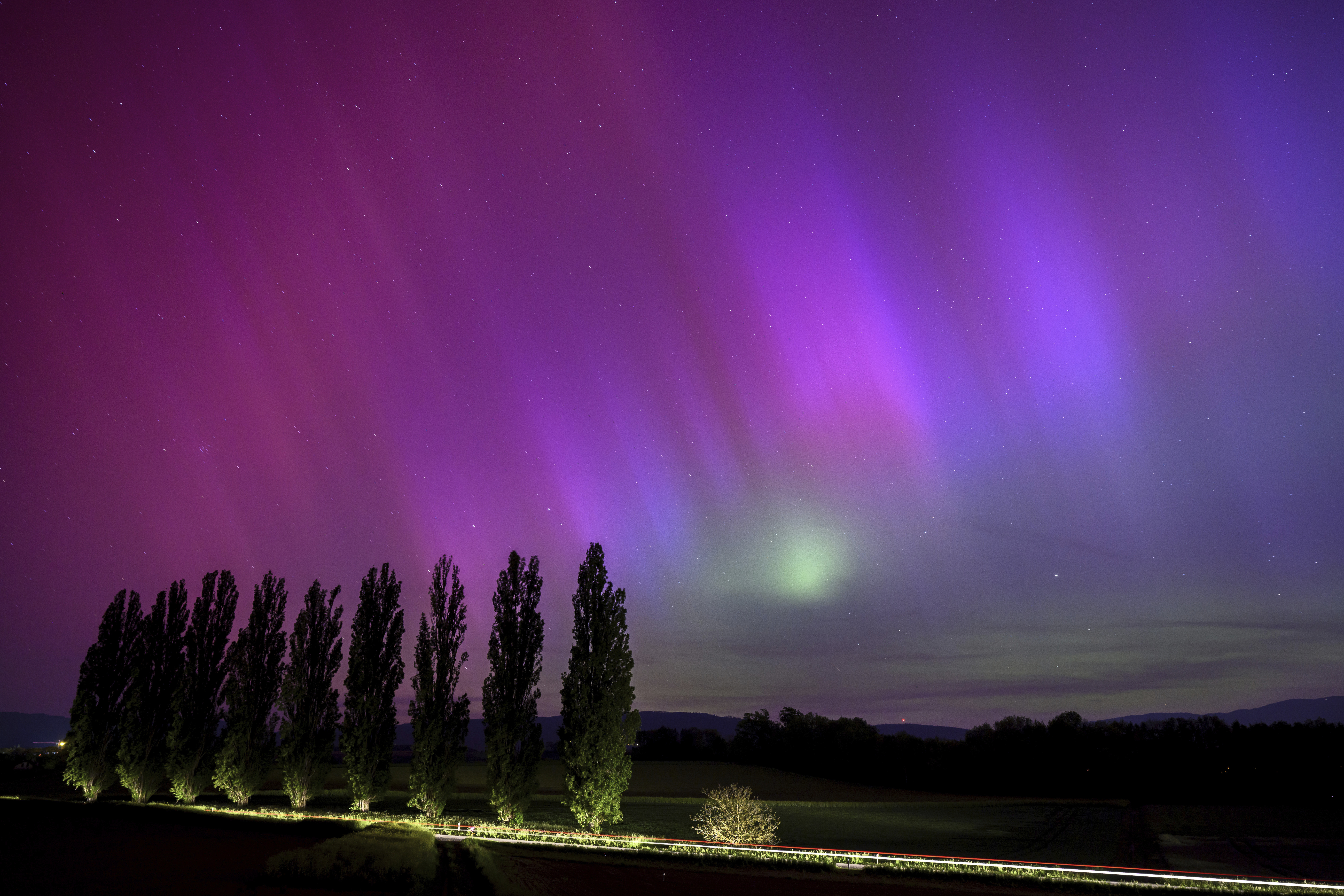CAPE CANAVERAL, Fla. – An unusually strong solar storm that struck Earth produced stunning displays of color in Northern Hemisphere skies early Saturday, with no immediate reports of power and communications outages.
The US National Oceanic and Atmospheric Administration issued a rare and severe geomagnetic storm warning as a solar flare hit Earth on Friday afternoon, hours ahead of schedule. The effects of the Northern Lights, which were on prominent display in Britain, were expected to last through the weekend and possibly into next week.
Many in the UK shared photos of the lights by phone on social media on Saturday morning, with the phenomenon seen as far south as London and southern England.
There have been sightings “up and down the country,” said Chris Snell, a meteorologist at the Met Office, the British weather agency. He added that the office had received photos and information from other European locations, including Prague and Barcelona.
NOAA has warned operators of power plants and spacecraft in orbit, as well as the Federal Emergency Management Agency, to take precautions.
“For most people here on planet Earth, they won’t have to do anything,” said Rob Steenburgh, a scientist at NOAA’s Space Weather Prediction Center.
The storm could produce northern lights in the southernmost US, Alabama and northern California, NOAA said. But it was difficult to predict and experts stressed that it would not be the dramatic curtains of color normally associated with the Northern Lights, but rather splashes of greenish hues.
“That’s really the gift of space weather: the aurora,” Steenburgh said. He and his colleagues said the best views of the aurora may come from phone cameras, which are better at capturing light than the naked eye.

Take a photo of the sky and “there might be a little gift for you,” said Mike Bettwy, the forecast center’s chief operating officer.
The most intense solar storm recorded in history, in 1859, caused auroras in Central America and possibly even Hawaii. “We’re not predicting that,” but it could come close, said Shawn Dahl, a NOAA space meteorologist.
This storm poses a risk to the high-voltage transmission lines of power grids, not the electrical lines normally found in people’s homes, Dahl told reporters. Satellites could also be affected, which in turn could disrupt navigation and communication services here on Earth.
An extreme geomagnetic storm in 2003, for example, knocked out power in Sweden and damaged power transformers in South Africa.
Even when the storm passes, signals between GPS satellites and ground-based receivers could be scrambled or lost, according to NOAA. But there are so many navigation satellites that any disruption shouldn’t last long, Steenburgh noted.

The sun has produced strong solar flares since Wednesday, resulting in at least seven plasma explosions. Each eruption, known as a coronal mass ejection, can contain billions of tons of plasma and magnetic field from the Sun’s outer atmosphere, or corona.
The flares appear to be associated with a sunspot 16 times the diameter of Earth, NOAA said. It’s all part of the increase in solar activity as the Sun approaches the peak of its 11-year cycle.
NASA said the storm did not pose a serious threat to the seven astronauts aboard the International Space Station. The biggest concern is increased radiation levels, and the crew could move to a more protected part of the station if necessary, according to Steenburgh.
Increased radiation could also threaten some of NASA’s scientific satellites. Extremely sensitive instruments will be turned off if necessary to prevent damage, said Antti Pulkkinen, director of the space agency’s heliophysical sciences division.
Several spacecraft focused on the Sun are monitoring all the action.
“These are exactly the kinds of things we want to look at,” Pulkkinen said.
This story originally appeared on Time.com read the full story



































